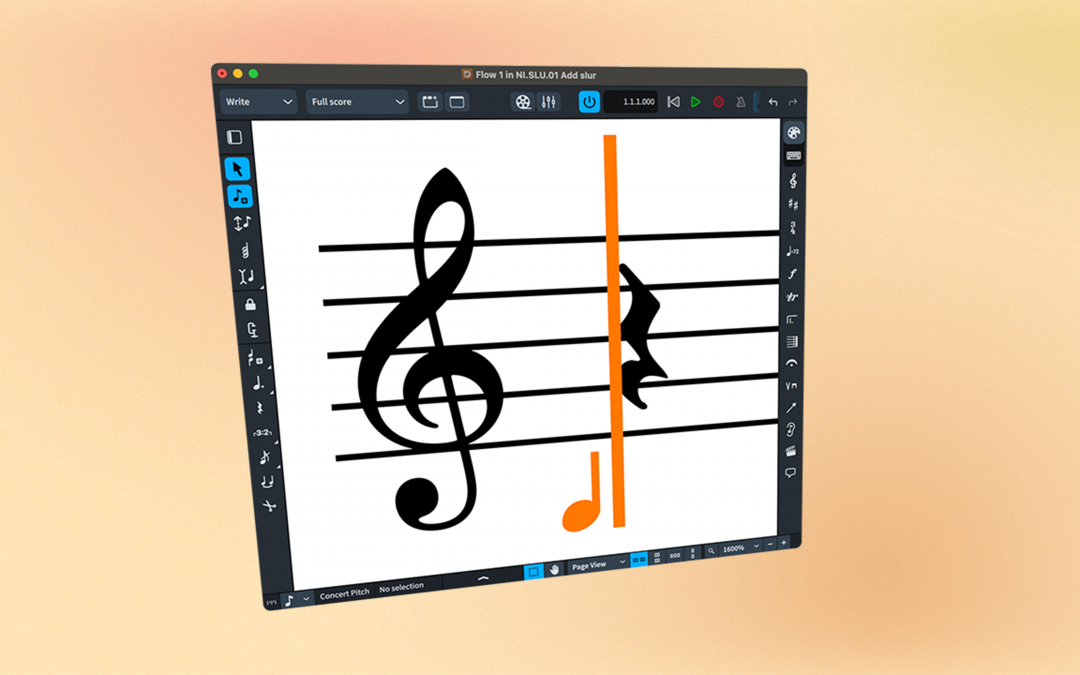
Translating Finale projects to Dorico using MusicXML
Since the news that Finale has been discontinued, the main questions we’ve received from Finale users looking to migrate to Dorico concern what to do with their existing Finale projects, and how to move them over to Dorico. In this tutorial, we’ll talk about when it makes sense to translate projects to Dorico and when it doesn’t, how to safely archive your Finale projects for future translation, and how best to approach the job of translating projects to Dorico. Let’s dive in!

Learn Note Input in Dorico: New series of tutorial videos released
I love Dorico, but then I have a rather special relationship with it. Not only am I in the extremely fortunate position to help present it to the world—by helping to shape the features and designing the user interface—I also have the great honour of showing it off to you all, guiding our users through all the incredible features by way of our tutorial videos. I challenge you to show me a better job.
Today I have great pleasure in announcing the first in a new series of YouTube playlists, all about learning Dorico. We’re starting with note input, and I have gone right back to first principles in order to write a series of videos that covers all you need to know to input notes in Dorico. It’s bang up-to-date with the latest Dorico release in terms of features and functionality, and I have reshot everything to use Dorico’s current look and feel.
The tutorial videos are concerned only with note input—other notations, such as dynamics, time signatures and so on, will receive their own dedicated playlist of videos at a later date. That means we’ll be looking at the left-zone in Write mode, and everything that the Notes toolbox and panel has to offer.
The playlist can be found here:
The videos are designed to help new users become acquainted with note input in Dorico, though I hope they will serve also as a valuable refresher for more experienced users, possibly with a few tips and tricks that even some of our more advanced users may not know about.
There are 22 videos in the series, so if there is something specific you are looking for, you can jump straight to it here:
01 Overview of Note Input
02 Starting Note Input
03 The Caret and Grid
04 Inputting Music Using the Mouse or Keyboard
05 Pitch and Duration
06 Inputting Chords
07 Inputting Slurs
08 Inputting Articulations
09 Inputting Rests
10 Inputting Tuplets
11 Inputting Grace Notes
12 Inputting Ties
13 Insert Mode
14 Selections and Navigating
15 Moving Notes: Pitch and Rhythmic Position
16 Copying Music to Speed Up Note Input
17 Lock Duration
18 Force Duration
19 Input into a Different Voice
20 Inputting Across Multiple Staves
21 Using the Cut Tool
22 Real-time MIDI Input
This is all part of our wider commitment to our support of Dorico, alongside the incredible work of my colleagues on the extremely detailed Dorico manual, and the longer-form YouTube live streams that dive in to Dorico’s features in greater depth using real-world contexts.
Over time, more videos will be released covering all aspects of Dorico’s functionality. I’m very much looking forward to building what I hope will be a valuable resource for both new and experienced users of Dorico.
What’s more, I have worked with my German colleague Markus Hartmann who will be bringing you German-language versions of these note input videos in the very near future – watch this space!
Tip: Fix page layout and edit Flow Headings in Dorico Elements 4
-
- Overwriting text tokens to add titles and other information can lead to layout issues.
- In Dorico Elements you can now remove page overrides in Engrave mode.
- Instead, add titles and other information to Project Info.
- You can edit the format of Flow Headings in Dorico Elements using a new dialog.
Tip: Add notations during note input
- You don’t need to exit note input to create other notations.
- For example, type Shift+D to open the dynamics popover while the caret is visible.
- Enter your required dynamics, even starting a hairpin – the hairpin will extend as you add more notes. End a hairpin by typing ? in the dynamics popover.
- Use other popovers to add further notations, for example trills and tremolos.
- Almost every type of notation can be created in this way, including playing techniques, tempo changes and clefs.
Tip: Set page and background colors for late-night work
- If you are working late at night you may prefer the interface a little less bright.
- In Preferences, choose the Colors category.
- Set the background color to a single, darker color.
- Invert the colors for the music, choosing your own page color.
